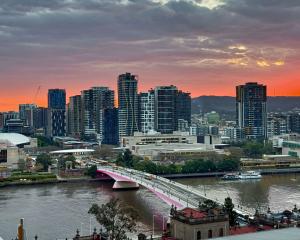
As part of a series covering some of the most popular world trips, travel writer Mark Eveleigh takes us on a journey along the Camino Trail in Spain.In 2022 I walked coast to coast across Spain, from Gibraltar to Estaca de Bares, the country’s remote and little-visited northern tip. It wasn’t a pilgrimage; in fact, I lived more like a vagabond, sleeping in my hammock and bathing in streams. That very solitary 1225km (35km/day) hike reignited an obsessive love for Spain’s backcountry that saw me walking several Camino routes during the following two years.
I once lived for a decade in Pamplona, and working on this book was an opportunity to renew my long-term fascination with the legendary Camino Frances.
Journey Camino de Santiago
Pilgrims have walked the network of ancient trails known as the Camino de Santiago for over 1000 years. Like the ridges on the Camino’s scallop-shell waymarkers, many pilgrim routes lead to Santiago de Compostela, but the popular Camino Frances stands out. It’s more than just a 767km hike: it’s also a transformative journey through Spain’s diverse landscapes, offering cultural immersion, quiet introspection and human connection. The magic lies not only in the distance covered, but also in experiences that leave a lasting mark on the soul.
 Pilgrims have walked the ancient trails for over 1000 years.
Hills, valleys & endless steppes
Pilgrims have walked the ancient trails for over 1000 years.
Hills, valleys & endless steppes

Your journey along the 767km Camino Frances encompasses a bewildering, awe-inspiring range of landscapes.
The long-distance hiker feels every nuance in the landscape at a level that few other travellers rarely do, especially in an era where whistle-stop globetrotting is so popular. For those pilgrims who plan to walk the entire Camino Frances, the almost unimaginable diversity of landscapes you will pass through is enough to invoke a feeling of vertigo, from days when you will conquer the Pyrenees to your arrival in the stunning city of Santiago de Compostela.
Lofty mountains
However, this feeling of vertigo is not exactly provoked by the especially lofty mountains you’ll cross. The crossing of Alto de Lepoeder in the Pyrenees and the hike past Cruz de Ferro are the two literal high-points of the Camino, although they reach just 1430m and 1504m, respectively. They nevertheless feel like another world compared with Burgos, which sits at the heart of the Meseta’s lowlands.
Historic rivers
The steady descent through Basque valleys over the course of several days is defined by the company of the Rio Arga, and as you cross the majestic bridge of Puente la Reina, leaving the river behind you, you’ll feel as if you’re saying goodbye to an old friend. But there are many other romantic and historic rivers to become acquainted with. The Rio Arlanzon, glinting radiantly under the Castilian sun, stands out as a momentous meeting upon the otherwise waterless plains, while Galicia’s Rio Minho is an infinitely more unsettling character. Clad in swirling mists and, so the Galicians say, accompanied at every turn by witches and spirits, the Minho seems to take mischievous joy in pouncing at you from hidden valleys or the gloomy shade of dripping forests.
 Lonely Planet — JOURNEY: Camino de Santiago RRP $36.99
Camino changes
Lonely Planet — JOURNEY: Camino de Santiago RRP $36.99
Camino changes

The Camino has changed since the first medieval pilgrims blazed these trails. Not only have the cities spread their shabby, dusty skirts out across the plains, but in many places the pilgrims’ passage now falls under the (perhaps envious) gaze of commuters on highways and railway lines.
The corn and wheat crops that were transported along this route to feed the Roman Empire have in many places been replaced by — admittedly attractive — valleys of sunflowers grown for bio-fuel. The ancient oak and chestnut forests still stand, but, as you travel further into the western hills of Galicia, you’ll notice that today’s shade and shelter are provided more often by eucalyptus trees (imported for the pulp industry). Some things remain timeless, however, and you can still expect gorgeous sunlit mornings (or romantically misty ones) while wandering through Spanish orchards, where branches hang heavy with apples, peaches and figs. You can still picnic in the shade of olive groves while staring across seemingly endless vineyards, and though the little province of La Rioja seems to fall behind you almost before you’ve noticed it, the evocative vineyards that are a highlight of northern Spain’s landscapes have no respect for political boundaries, and vines form a backdrop to much of your journey through western Navarre and into the autonomous community of Castilla y Leon.
■ Mark Eveleigh, is a writer and author of Vagabond: A Hiker’s Homage to Rural Spain.












